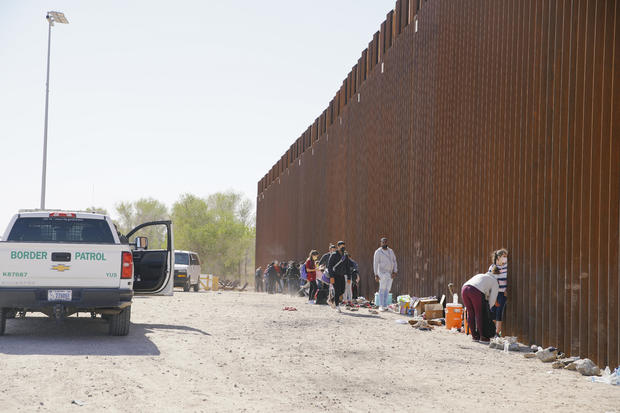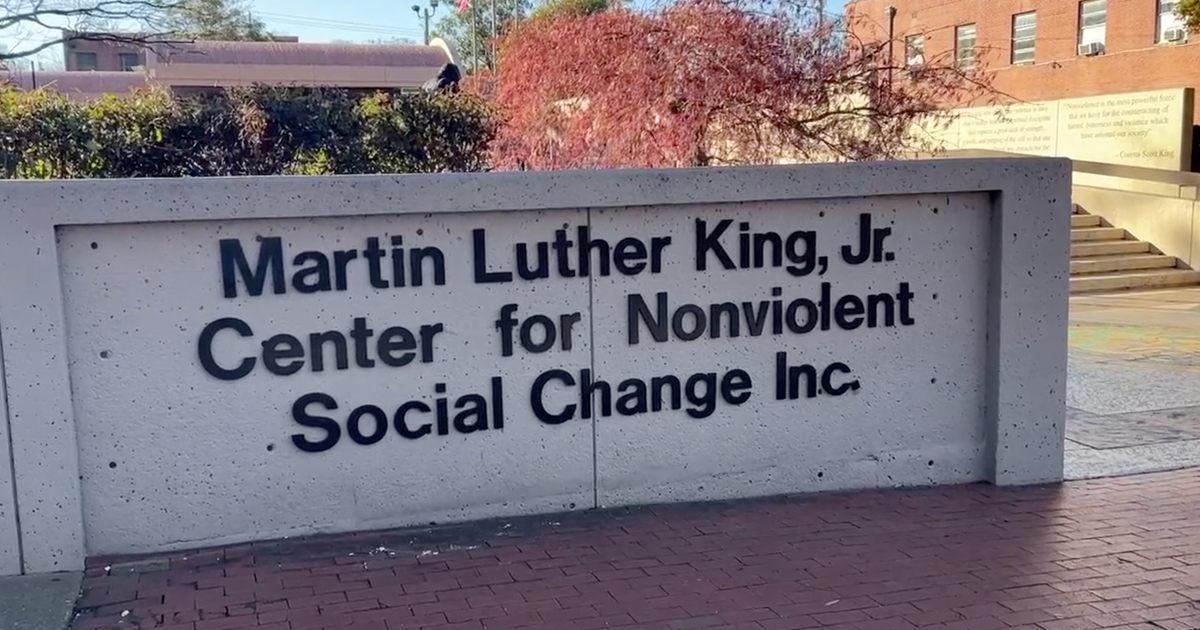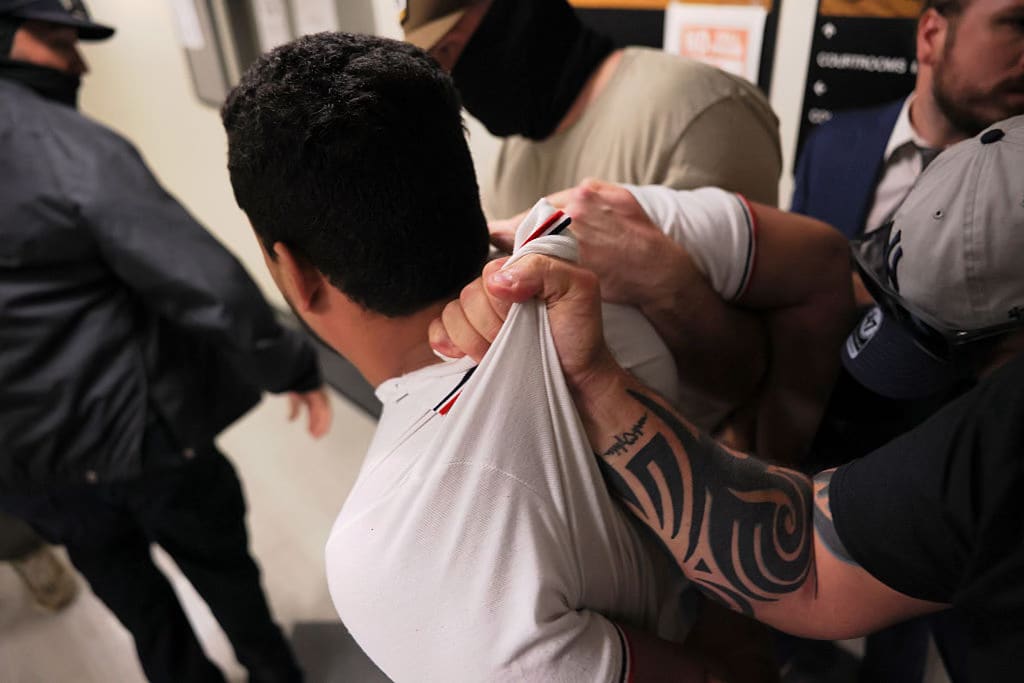U.S. announces overhaul of asylum process to begin in late spring
The U.S. has finalized regulations it hopes will overhaul the asylum process along the southern border, the Biden administration announced Thursday, though federal officials said the plan will be initially implemented on a small scale beginning in the late spring.
President Biden's appointees have argued the long-awaited rule will accelerate the government's ability to give refuge to asylum-seekers fleeing persecution while deporting those deemed ineligible for U.S. protection. Officials hope the changes discourage migrants who do not qualify for asylum but are looking for better economic opportunities from crossing the border illegally.
A key operational change will be the authorization of Department of Homeland Security (DHS) asylum officers to approve or deny requests for U.S. refuge from migrants who pass initial interviews, as opposed to transferring those claims to the nation's immigration courts, which have a backlog of over 1.7 million cases.
U.S. law allows officials to grant asylum to migrants who prove that, if deported, they could be persecuted because of their race, nationality, politics, religion or membership in a social group. But because of the massive backlog, asylum applicants can wait years before their requests are heard and decided.
Government officials have said these lengthy adjudication periods, which can be extended by appeals, encourage migrants fleeing economic hardship to use the asylum system to stay and work in the U.S. indefinitely. The delays also harm asylum-seekers with valid claims, officials argue, trapping them in a years-long legal limbo.
The regulation changes, which are set to take effect in a little over two months, seek to reduce the timeline for asylum cases to be decided from years to 90 days, Biden administration officials said during a briefing with reporters.
"The current system for handling asylum claims at our borders has long needed repair," DHS Secretary Alejandro Mayorkas said in a statement. "Through this rule, we are building a more functional and sensible asylum system to ensure that individuals who are eligible will receive protection more swiftly, while those who are not eligible will be rapidly removed."
Administration officials said they expect the overhaul to start in late May or early June, but noted that agencies are still discussing where along the southern border the plan will debut and which migrants will be initially processed under the new procedures.
"There will be a very careful, sort of slow ramp up of cases into this system," a senior administration official told reporters. "We do not anticipate having a large number of individuals placed into this process in the first weeks and months as we make sure the process functions the way we anticipate that it should."
The regulation will apply to migrants in U.S. custody who are placed in so-called "expedited removal" proceedings, a process created in 1996 that allows officials to deport recent border-crossers without a court hearing unless they express fear of being harmed in their home country and prove that their fear is credible.
Single adult migrants and families traveling with children can be placed in expedited removal but U.S. law bars authorities from applying the policy to unaccompanied minors.
If migrants express fear of persecution, U.S. Citizenship and Immigration Services (USCIS) asylum officers will have 30 days to interview them and determine whether the fear is credible. If migrants fail these interviews, they can be swiftly deported unless they ask an immigration judge to reconsider their claim. Judges would then have seven days to either uphold the asylum officer's determination or overrule it.
If migrants establish credible fear of persecution, they will receive an appointment for a more in-depth interview with an asylum officer 21 to 45 days after the initial screening determination is made. Asylum-seekers could be detained or outside U.S. custody during this process, a senior Homeland Security official said.
Asylum officers would then have 60 days after that interview to deny or grant migrants asylum. Migrants who are granted asylum are allowed to stay in the U.S. indefinitely and qualify for permanent residency a year after the decision.
If a migrant's asylum application is denied at this stage, their case will be transferred to the Justice Department immigration courts, which hold adversarial hearings. Judges would then be tasked with deciding within 90 days whether migrants should be ordered deported or allowed to stay because they qualify for humanitarian relief.
The timeline is significantly shorter than regular immigration court cases, officials said, because judges will be receiving all documents previously reviewed by asylum officers, including interview transcripts. Speeding up this timeline would also help to clear the court case backlog.
"The judges will not be starting from scratch," a senior Justice Department official said. "They will be getting these cases from USCIS with a fairly substantial record."
In addition to asylum, immigration judges can grant lesser forms of protection, known as withholding of removal and protection under the United Nations Convention Against Torture, to eligible migrants fleeing persecution or torture. Unlike asylum, these protections do not grant beneficiaries permanent status.
Those ordered deported can appeal the decision to the Board of Immigration Appeals and then, if necessary, a federal circuit court. But those appeals could take years to complete. Once migrants have final orders of deportation, U.S. Immigration and Customs Enforcement (ICE) agents can arrest and deport them.
During Wednesday's briefing, administration officials acknowledged that the USCIS asylum division, which is already reviewing over 432,000 pending applications, does not have sufficient resources or employees to immediately implement the new procedures on a large scale.
The ambitious policy also faces other challenges and unresolved questions, such as whether migrants will be detained during the proceedings and if so, where.
According to people familiar with the deliberations, the administration has considered erecting campus-like processing centers to screen asylum-seekers in a more humane setting than Customs and Border Protection holding facilities, which are not designed to house migrants past three days. No such facilities have yet been erected.
Detaining asylum-seekers processed under the new rule could also spark outcry among progressive advocates, who denounce immigration detention. Conversely, Republican lawmakers would likely criticize the release of migrants into U.S. communities.
It's also unclear whether the current pandemic-era border policy of expelling most migrants on public health grounds will be in place when the new asylum rules take effect. Under the Trump-era policy, known as Title 42, U.S. border agents have expelled migrants over 1.7 million times since March 2020 without allowing them to seek asylum.
If a recent court ruling is upheld, Title 42 could be scaled back or terminated starting in April. The Centers of Disease Control and Prevention, which authorizes Title 42, is set to decide whether to retain the policy by March 30.







